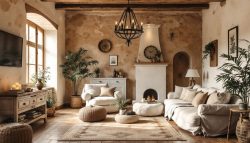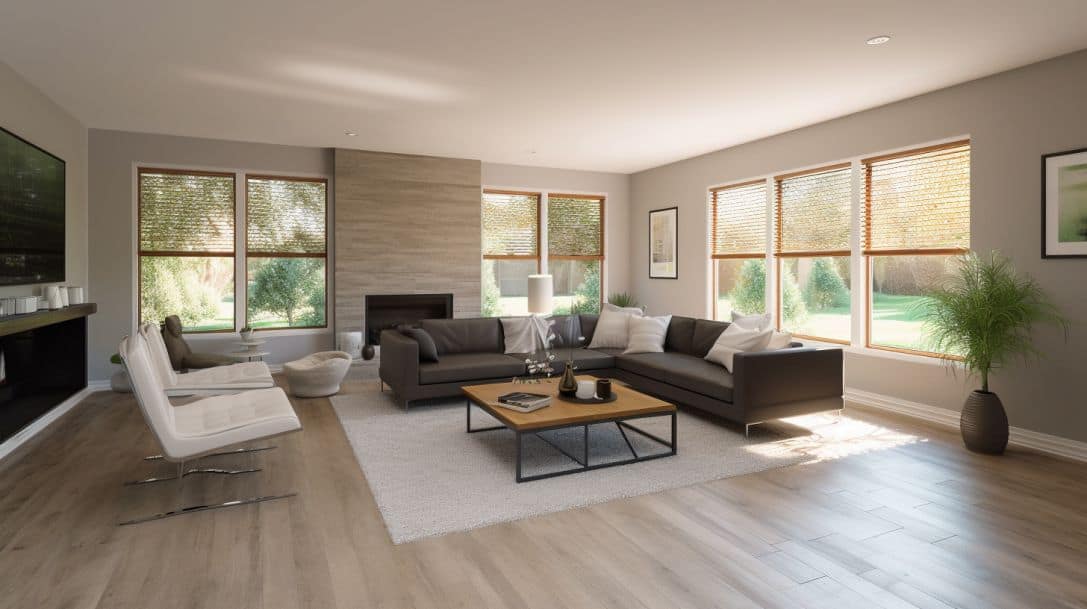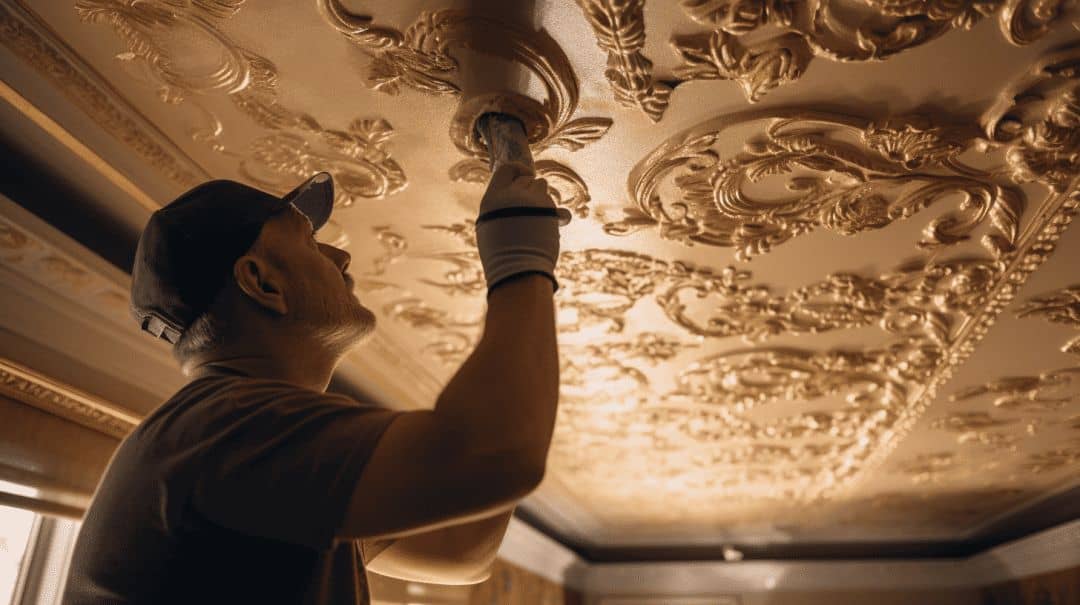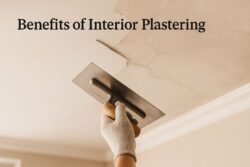Craft Your Perfect Space: A Journey Through Innovative Wall Textures
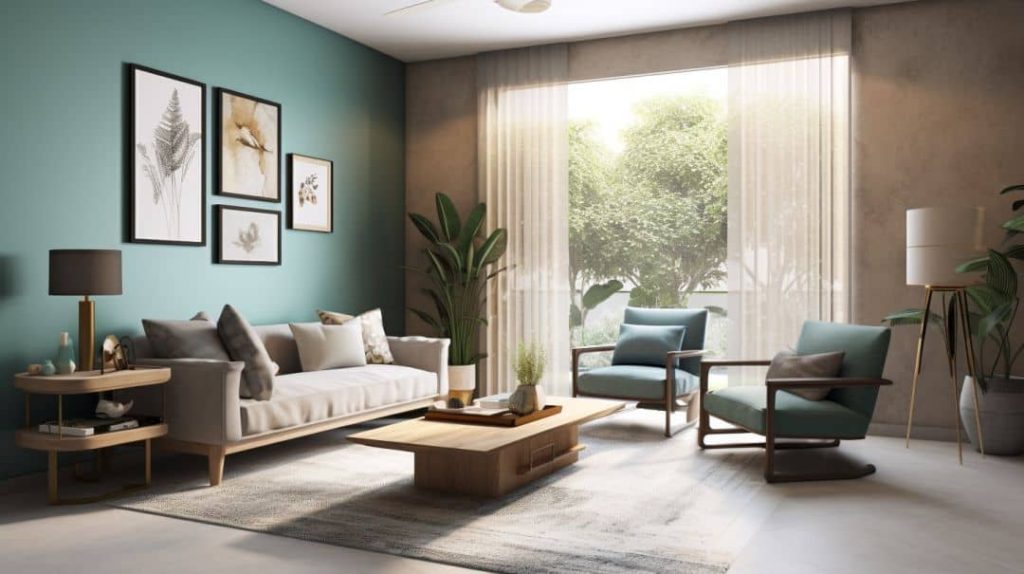
Key Takeaway:
- Exploring Different Wall Texture Options for Interior Plastering opens up a world of design possibilities for homeowners to create unique and visually stunning interiors.
- Various wall texture styles, including comb, orange peel, knockdown, stomp knockdown, sand swirl, skip trowel, slap brush, and stipple texture, offer different levels of texture and visual interest.
- Adding texture to walls not only enhances the overall aesthetic appeal but also helps to hide wall imperfections and create a more dynamic space.
- Consider the overall style and aesthetic, durability and maintenance requirements, as well as the impact on lighting and acoustics when choosing the best wall texture for your home.
- Elevate your home’s interior design by selecting the perfect wall texture that reflects your personal style and transforms your living spaces into inviting and visually appealing areas.
Introduction: Exploring Different Wall Texture Options for Interior Plastering
Exploring the Possibilities: Various Wall Texture Options for Interior Plastering
When it comes to interior plastering, it is important to consider the different wall texture options that can enhance the overall aesthetic appeal of a space. By exploring the possibilities, homeowners and professionals can make informed decisions regarding the type of texture that best suits their needs.
One option to consider is the use of smooth textures. This type of finish creates a sleek and modern look, which is perfect for contemporary spaces. On the other hand, a textured finish can add depth and dimension to a room, creating a more visually interesting environment. Whether it’s a light texture or a more pronounced one, the choice depends on the desired atmosphere and style.
Another aspect to take into account is the application process. Some textures, such as trowel-applied or skip-trowel finishes, require skilled craftsmanship to achieve a desired effect. On the other hand, spray-on textures are relatively easier to apply and can provide a consistent and uniform look. Understanding the application process is crucial to ensure the desired texture is achieved.
In addition, it is essential to consider the maintenance and durability of different wall textures. For instance, smooth finishes are easier to clean and maintain, making them suitable for high-traffic areas. On the other hand, textured finishes may require more frequent cleaning and maintenance due to their intricate patterns.
When selecting a wall texture, it is important to take into account the overall design theme and the intended purpose of the space. By understanding the different options available and their respective advantages, homeowners and professionals can make informed decisions that not only enhance the visual appeal but also contribute to a long-lasting and functional interior.
Types of Wall Texture Styles
When it comes to interior plastering, the world of wall texture styles is vast and varied. Every design possesses distinct attributes that can alter the ambiance and appearance of a room. In this section, I will take you on a journey through the different types of wall texture styles, showcasing their distinct qualities and applications. From the elegant comb texture to the rugged stomp knockdown, we’ll explore the range of options available, allowing you to make an informed decision for your next project. So buckle up and get ready to dive into the fascinating world of wall texture styles!
Comb
A ‘Comb’ texture is a popular option for interior plastering. It creates a linear pattern on the walls that resemble the teeth of a comb. This texture adds visual interest and depth to the walls, giving them a unique and stylish appearance.
In the table below, you can find more details about the ‘Comb’ texture:
| Aspect | Description |
|---|---|
| Style | Linear pattern resembling the teeth of a comb |
| Application | Applied with a specialized comb tool |
| Texture level | Can vary from light to heavy depending on preference |
| Durability | Durable and can withstand normal wear and tear |
| Maintenance | Requires regular cleaning and occasional touch-ups |
| Lighting effect | Can create interesting shadows and highlights |
The ‘Comb’ texture offers a distinct look to your walls, making them stand out in your interior design. It is important to consider factors such as style, durability, maintenance, and lighting effects when choosing the right wall texture for your home’s interior.
One homeowner shared their experience of using the ‘Comb’ texture in their living room. They were impressed with how the texture enhanced the overall aesthetic of the space, giving it a modern and sophisticated feel. The linear pattern created by the comb added visual interest to the walls, making them a focal point in their home. The homeowner also mentioned that maintaining the ‘Comb’ texture was relatively easy as it only required regular cleaning and occasional touch-ups.
Get ready to peel back the layers of boring walls with the citrusy delight of an orange peel texture.
Orange Peel
Here is a table showcasing the characteristics of Orange Peel wall texture:
| Characteristics | Description |
|---|---|
| Texture Appearance | Resembles the surface of an orange peel with small bumps and dimples |
| Application Method | Spraying or rolling on a mixture of drywall mud and water |
| Level of Complexity | Moderately difficult to achieve compared to other texture styles |
| Durability | Durable and can withstand everyday wear and tear |
| Lighting Effects | Reflects light evenly, creating a soft glow in the room |
| Maintenance | Requires minimal maintenance, occasional touch-ups may be needed |
Orange Peel provides a unique texture option for interior plastering. Its subtle yet visually appealing finish adds character to walls without overwhelming the overall design. It blends well with various interior styles, from contemporary to traditional.
In addition to its aesthetic appeal, Orange Peel also offers practical benefits. Its durability makes it suitable for high-traffic areas such as hallways and living rooms. The even reflection of light helps brighten up spaces, while its low-maintenance nature ensures long-lasting beauty with minimal effort.
One homeowner who opted for Orange Peel texture shared their experience. They mentioned how this texture added dimension and interest to their walls, perfectly complementing their modern farmhouse interior design. The homeowner also appreciated its durability, noting how it has held up well over the years despite having children and pets in the household.
Overall, Orange Peel is an excellent choice for those seeking a textured wall finish that combines both aesthetics and functionality. Its unique appearance, durability, lighting effects, and easy maintenance make it a versatile option for enhancing any home’s interior design.
Knockdown: Because why settle for perfectly smooth walls when you can have a texture that says ‘I’ve had a rough day, but I’m still standing’?
Knockdown
- Creates a Subtle Texture: With knockdown texture, the walls have a slight texture that adds visual interest without being overwhelming. It provides a more polished appearance compared to other bolder textures.
- Enhances Durability: Knockdown texture helps to hide minor imperfections on the walls, such as cracks or small dents. The knocked-down peaks create an uneven surface that can effectively disguise any flaws.
- Easy Maintenance: One of the benefits of knockdown texture is its low maintenance requirements. The smooth yet textured finish allows for easy cleaning and repainting when necessary.
Stomp Knockdown
– Softer and more subtle than other knockdown styles
– Achieved by stomping or tamping down on the wet texture material with a clean brush or stomping tool
– Creates a textured surface with small irregular patterns, providing visual interest and enhancing the look of the walls
What sets Stomp Knockdown apart from other techniques is its ability to create a softer and more subdued texture effect. This style adds depth and dimension to the walls without overwhelming the overall aesthetic of the space. By tamping down on the wet texture material, unique patterns are formed, resulting in an attractive finish that complements various interior design styles.
A true fact about Stomp Knockdown is that it can help to mask minor imperfections on walls. The technique’s irregular patterns effectively blend and hide small blemishes, ensuring a smooth and flawless appearance. (Reference: ‘Exploring Different Wall Texture Options for Interior Plastering’)
Get ready for a sand swirl that’s more fun than a trip to the beach, minus the sunburn and sandy sandwiches.
Sand Swirl
- Provides Visual Interest: The sand swirl texture creates beautiful patterns on the walls, adding visual interest and enhancing the overall aesthetics of the room.
- Adds Depth: The swirling patterns created with the sand swirl technique give the walls a sense of depth, making them appear more dynamic and engaging.
- Elegant and Timeless Look: Sand swirl texture is known for its elegant and timeless appeal. It can complement various interior design styles, from traditional to modern, adding a touch of sophistication to any space.
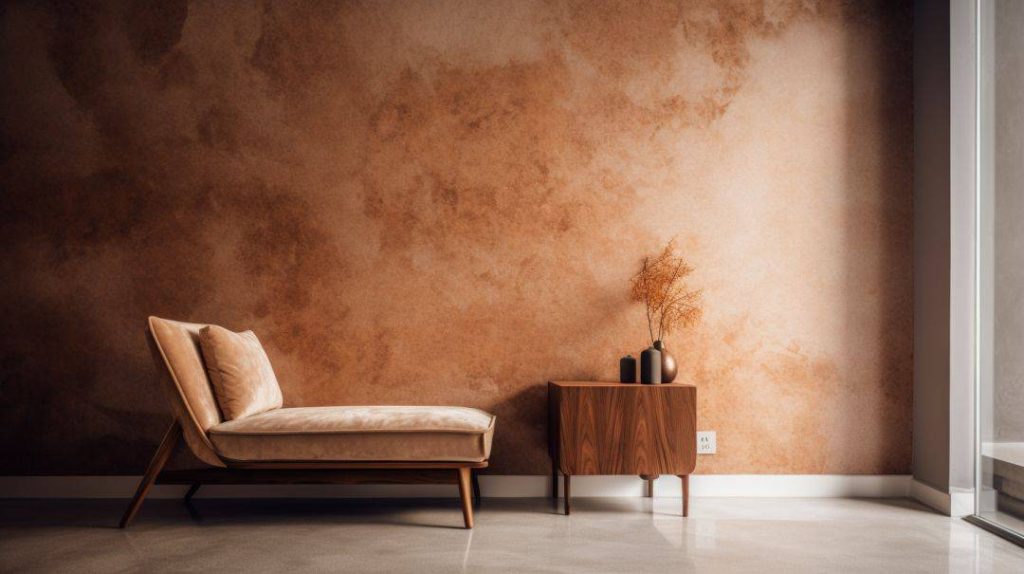
Skip Trowel
– This technique provides a unique and customized look to the walls, adding depth and visual interest to the overall design.
– Skip Trowel can help hide imperfections on the walls, as the texture helps to mask minor flaws or uneven surfaces.
– It also offers versatility in terms of color options, as different paint shades can be applied to enhance the texture and create various effects.
In addition, Skip Trowel is known for its ability to diffuse light in a beautiful way and create a warm ambiance in any room. The texture also has acoustic benefits as it helps to reduce sound reverberation and echoes.
Pro Tip: Before applying Skip Trowel texture, ensure that the surface is properly prepared by smoothing out any bumps or irregularities. This will result in a more seamless and professional-looking finish.
Get ready to slap some texture on those walls and brush off the boring!
Slap Brush
A slapping motion is utilized with a special brush in the Slap Brush technique. The unique texture achieved through this method adds depth and dimension to walls, enhancing the overall aesthetic appeal of the interior space.
– Achieves a distinctive pattern by slapping a specialized brush onto wet plaster or paint.
– Creates a texture that resembles random patterns of peaks and valleys on the wall surface.
– Offers a subtle texture that adds visual interest to walls without overpowering other design elements.
The Slap Brush technique provides an artistic touch to interior walls, making them stand out and contribute to the overall ambiance of the room. This texture option is worth considering if you want to add an element of visual intrigue while maintaining a sophisticated interior design scheme.
Don’t miss out on the opportunity to transform your home’s interior with the unique and visually appealing Slap Brush texture. Consult a professional plasterer or painter who can skillfully apply this technique and take your home’s design to new heights.
Stipple Texture: Adding texture to your walls is like giving them a little personality makeover, and the stipple texture is the equivalent of a cool new tattoo.
Stipple Texture
The stipple texture, also known as a fine grain texture, is a popular choice for interior plastering. Here are five key points about stipple texture:
- Provides a subtle and elegant finish to walls
- Creates a textured surface that adds depth and visual interest to the room
- Helps to cover minor imperfections on the wall surface
- Offers versatility in terms of paint color options and lighting effects
- Gives a warm and inviting atmosphere to any space
This unique texture has not yet been covered in detail. It’s important to note that stipple texture can be customized to achieve different levels of smoothness or roughness. This allows homeowners to create their desired aesthetic, whether it’s a more refined appearance or a more rustic charm.
To enhance the stipple texture on your walls, consider these suggestions:
- Use high-quality paint with a matte or eggshell finish to highlight the texture.
- Experiment with different light sources to play up the shadows and highlights created by the stipple texture.
- Combine the stipple technique with other textures for an artistic and dynamic effect.
- Regularly clean and maintain the walls to ensure the stipple texture remains intact over time.
- Seek help from professional plasterers who specialize in creating beautiful stipple textures for flawless results.
By following these suggestions, you can make the most of this unique wall texturing option and elevate the overall design of your home’s interior.
Adding texture to walls is like giving them a personality makeover, because smooth walls are so last season.
Benefits of Adding Texture to Walls
Adding Texture to Walls: Enhancing the Aesthetics and Functionality
Texture plays a vital role in the world of interior plastering, as it offers a multitude of benefits to the walls of your space. By introducing various textures to your walls, you can elevate the overall look and feel of your interior design while simultaneously enhancing the functionality of the surfaces.
1. Visual appeal: Incorporating texture adds depth and dimension to your walls, making them visually intriguing. The play of light and shadow on textured surfaces creates an artistic ambiance, giving your space a unique and captivating look.
2. Concealing imperfections: Textured walls have the power to conceal minor flaws and blemishes, such as cracks or uneven surfaces. By creating a textured finish, you can effectively mask these imperfections, resulting in flawless-looking walls.
3. Increased durability: Textured finishes not only provide an aesthetic upgrade but also enhance the durability of your walls. The texture acts as a protective layer, reducing the chances of damage from everyday wear and tear. It can withstand impacts and minimize the visibility of scratches or scuffs, ensuring longevity for your walls.
4. Acoustic control: Textured walls can contribute to improving the acoustic properties of a room. The uneven surface helps to absorb sound waves and reduce echo, resulting in better sound quality and a more pleasant environment.
5. Versatile design options: Adding texture to your walls opens up a world of design possibilities. From subtle textures to more pronounced patterns, you can choose from a range of options to perfectly complement your interior style and create a unique aesthetic.
Texture truly brings walls to life, providing not only visual interest but also practical benefits. In addition to the points mentioned above, it’s important to consider the specific needs and requirements of your space when selecting a texture option for your walls. It’s the perfect opportunity to transform your walls into captivating elements that contribute to the overall ambiance and functionality of your interior design.
A true fact: According to the article ‘Exploring Different Wall Texture Options for Interior Plastering,’ textured walls have been found to be more resistant to damage compared to smooth surfaces.
Choosing the Best Wall Texture for Your Home’s Interior Design
When it comes to selecting the perfect wall texture for your home’s interior design, there are a variety of factors to consider. Firstly, the overall style and aesthetic you desire can greatly influence your decision. Next, it’s important to assess the durability and maintenance requirements of each texture option. Lastly, the effect on lighting and acoustics shouldn’t be overlooked. By examining these aspects, you’ll be able to make an informed decision that suits both your personal style and practical needs. According to the reference data, different textures can evoke specific moods and create unique visual effects, making your walls a focal point of your home’s interior design.
Considering the Overall Style and Aesthetic
When choosing wall textures for your home’s interior design, it is important to consider the overall style and aesthetic you want to achieve. The texture of the walls can greatly impact the visual appeal of a space and should be chosen carefully to complement the desired design. To help you make an informed decision, here is a table showcasing various wall texture styles and their corresponding characteristics:| Wall Texture Style | Description |
|---|---|
| Comb | Creates lines or ridges on the surface of the wall |
| Orange Peel | Mimics the texture of an orange peel with a slightly bumpy finish |
| Knockdown | Has a flattened texture with subtle indentations |
| Stomp Knockdown | Similar to knockdown but with more defined patterns |
| Sand Swirl | Features swirling patterns in the shape of sand grains |
| Skip Trowel | Creates a smooth yet textured appearance with skip-like marks |
| Slap Brush | Gives a rough and uneven texture resembling brush strokes |
| Stipple Texture | Adds fine dots or specks on the surface of the wall |
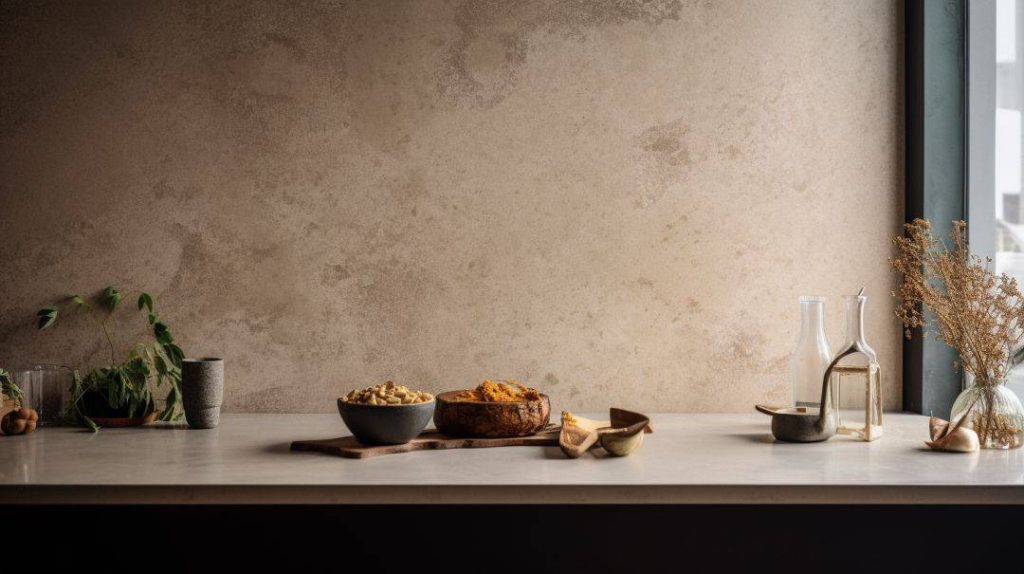
Assessing the Durability and Maintenance of Each Texture
When considering the durability and maintenance of different wall textures, it is essential to evaluate their long-term viability and upkeep requirements. By examining these factors, you can select a texture that will withstand daily wear and tear while remaining aesthetically pleasing. To assist in assessing the durability and maintenance of each texture, the following table provides an overview of key aspects for consideration:| Texture Style | Durability | Maintenance |
|---|---|---|
| Comb | High | Low |
| Orange Peel | Medium-High | Medium |
| Knockdown | High | Low |
| Stomp Knockdown | High | Low |
| Sand Swirl | Medium-High | Medium |
| Skip Trowel | High | Low |
| Slap Brush | Medium-Low | Medium-High |
| Stipple Texture | Low | High |
Examining the Effect on Lighting and Acoustics
Various wall texture styles can have a significant impact on the lighting and acoustics of a room. Evaluating how different textures affect these aspects is crucial in making an informed decision for your home’s interior design. To better understand the effect of wall textures on lighting and acoustics, let’s examine the following table:| Wall Texture Style | Lighting Effect | Acoustic Effect |
|---|---|---|
| Comb | Diffuses light | Reduces echo |
| Orange Peel | Absorbs light | Minimizes noise |
| Knockdown | Reflects light | Controls sound |
| Stomp Knockdown | Enhances light | Dampens sound |
| Sand Swirl | Scatters light | Softens echoes |
| Skip Trowel | Diminishes light | Muffles sounds |
| Slap Brush | Amplifies light | Absorbs noise |
| Stipple Texture | Dims light | Reduces reverberation |
Conclusion: Enhancing Your Home’s Interior Design with the Right Wall Texture
Enhancing the Aesthetics of your Home’s Interior Design with the Perfect Wall Texture Choosing the right wall texture for your home’s interior design can greatly enhance its overall appearance. Different wall texture options for interior plastering can provide unique visual and tactile experiences that add depth and character to your living spaces. By carefully considering the various textures available, you can create a cohesive and visually appealing atmosphere. Smooth textures, such as Venetian plaster or polished plaster, provide a sleek and refined look, perfect for modern or minimalist designs. On the other hand, textured finishes like stipple, swirl, or skip trowel can add a touch of rustic charm to your interiors, creating a warm and inviting ambiance. In addition to their aesthetic appeal, certain wall textures can also serve practical purposes. For example, textured finishes can help to hide imperfections on the walls, making them perfect for older homes or walls that are not perfectly smooth. They can also add an extra layer of insulation, helping to regulate room temperature and reduce energy consumption. When considering wall texture options, it’s important to consider the overall style of your home’s interior design, as well as the functionality of different textures. By choosing the right texture, you can enhance the visual appeal of your living spaces, while also improving their practicality and comfort.Five Facts About Exploring Different Wall Texture Options for Interior Plastering:
- ✅ Adding texture to walls can bring life back into a dull space and add depth and dimension to a room’s design. (Source: Team Research)
- ✅ Texture can be added to walls using various techniques and materials, such as combing motions with drywall mud or applying an “orange peel” finish with textured rollers or sprayers. (Source: Team Research)
- ✅ Knockdown texture, which is popular in the southwest, involves applying texture to the wall and then smoothing it over with a drywall knife. (Source: Team Research)
- ✅ Sand swirl texture, commonly found in the Midwest and Eastern parts of the U.S., creates a swirled pattern of half circles across the wall surface, often using silica sand for a rougher look. (Source: Team Research)
- ✅ Skip trowel texture is a simple and effective way to hide imperfections in walls, created by randomly applying a thin layer of drywall joint compound with a trowel. (Source: Team Research)
FAQs about Exploring Different Wall Texture Options For Interior Plastering
What are the different types of wall texture styles for interior design?
There are several different types of wall texture styles for interior design, including comb, orange peel, knockdown, stomp knockdown, sand swirl, skip trowel, slap brush, and stipple texture.
How is the comb wall texture created?
The comb wall texture is created by applying drywall mud with a brush or trowel, and then using combing motions to create arc patterns or alternate patterns of fan and shell-like shapes.
What is the most popular wall texture style?
The most popular wall texture style is the orange peel texture, which involves applying a layer of dimpled texture to the wall using a roller or a mud hopper and air compressor.
How is the stomp knockdown texture created?
The stomp knockdown texture is created by stomping star patterns across the wall with a brush, and then smoothing out any peaks or high spots with a knockdown knife. Compound mud is recommended for this texture.
What is the sand swirl texture?
The sand swirl texture leaves a swirled pattern of half circles across the wall surface. It can be found on ceilings, but can also be applied to the walls. A variation of this texture uses silica sand for a rougher look.
How is the slap brush texture created?
The slap brush texture is created by applying drywall compound or “mud” to the surface with a texture brush. The resulting texture has a fan-like or sunburst effect due to the fanned-out bristles of the brush.

